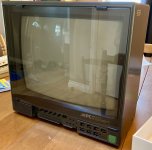seat safety switch
Experienced Member
Only had a little while to play with it today but found out that the wire going from CN606 on the power supply was not attached to anything. It looks like it can only go to CN12, but the schematics don't make it explicit that CN606 -> CN12.
CN12 goes to pins 44 and 46 in the cartridge slot, which this Japanese site says seems to be related to hotswap protection for the cartridges:
Although Google Translate has made it more confusing than I want it to be, I think it's saying MSW1 and MSW2 are there to override the reset microswitch in the cartridge slot?
CN12 goes to pins 44 and 46 in the cartridge slot, which this Japanese site says seems to be related to hotswap protection for the cartridges:
MSW1 and MSW2 are shorted on the extension board side. Inside the expansion slot, there is a power-off switch, and when this switch is turned on, the power supply of the power supply unit is stopped. In other words, when you try to insert the ROM cartridge into the PC-6001, the power-off switch is physically turned on. The PC-6001 is designed to stop electrically if you attempt to handle it as dangerous as inserting the ROM cartridge while the PC-6001 is operating. If only this is done, the PC-6001 will not operate, but if the MSW1 and MSW2 are shorted on the ROM cartridge side, power supply from the power supply unit is started even if the power-off switch is ON. is. If you insert something thin like a board into the extension terminal, the power-off switch will not turn ON (do not touch the switch), so there is no need to short MSW1 and MSW2.
Although Google Translate has made it more confusing than I want it to be, I think it's saying MSW1 and MSW2 are there to override the reset microswitch in the cartridge slot?





